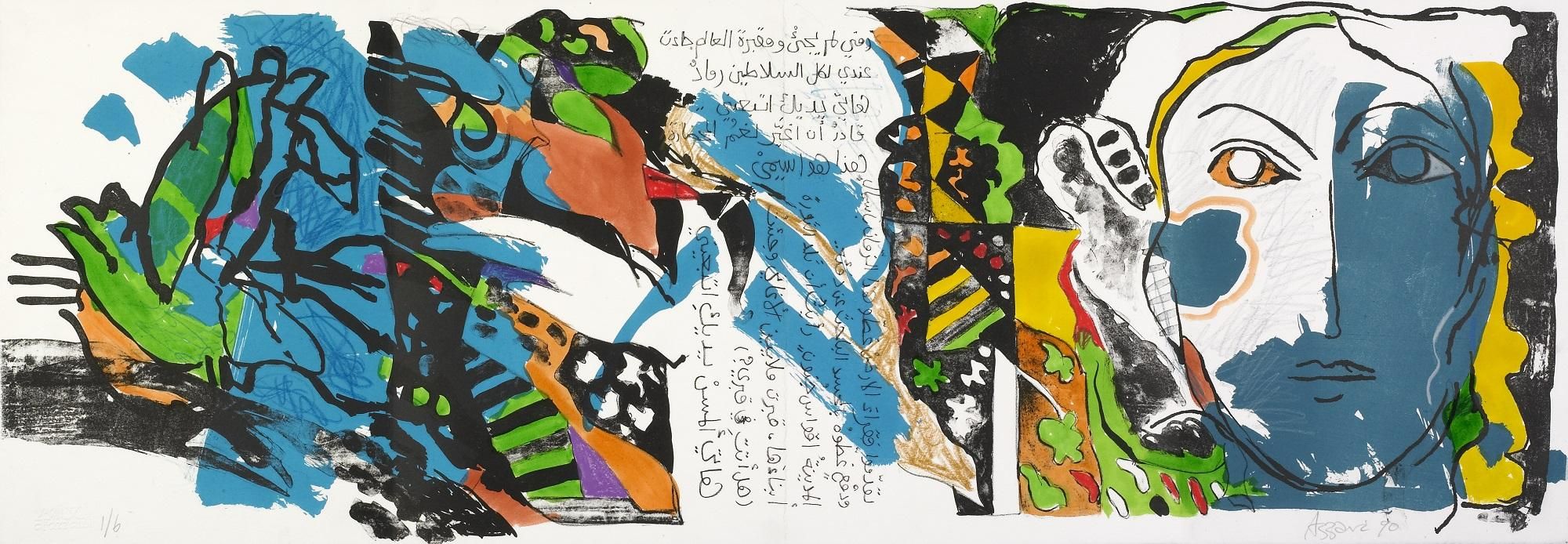Visual Journey through the Art of Arabic Calligraphy
By Nadia Tobia, Architect
June 2023
The art of Arabic calligraphy (Al-Khatt Al-Arabi) through the passage of time is the theme of this article. It focuses on the visual characteristics and changes that occurred in the application of Arabic calligraphy as an art. This brief coverage illustrates the visual aspects that have developed through time.
There has been great interest in grouping and categorizing the way the script has been used in fine art. Several important books and articles have been written and exhibitions curated on this topic. The amount of work involved, and the long lists of calligraphers and artists from various regions of the world is very impressive. To capture all in one article will not be possible.
To visualize the changes the journey will start with the early work and end with the recent appearances. Sections will be in the following sequence with the addition of a background information on the script:
- Early Work of Calligraphy
- Traditional Work by Calligraphers
- Fine Art Calligraphy: The Pioneers
- Fine Art Calligraphy: Forms and Patterns
- Fine Art Calligraphy: Integrated
- Fine Art Calligraphy: Post 2000: Emerging Trends and Artists
Early Work:
Early work from the Abbasid Caliphate, has set the basis for calligraphy as a means of expression and as an element of aesthetics. Arabic calligraphy was written on several mediums: on various types of parchment (originally made from treated animal skins) and later paper and on several other materials such as wood, bone, glass, metal, stone and brick.
Artifacts with Arabic calligraphy included, ornamented Holy Qur’an pages, manuscripts, ceramic and metal pieces, textiles and carpets. Calligraphy was also engraved on semi-precious stones. Iconic pieces are exhibited in major museums around the world. Calligraphy was used widely in architecture, including facades and interiors of religious and civic buildings.
Arabic calligraphy is used frequently with other decorative elements such as geometric patterns and arabesque designs and motifs including curving plants and leaves. These three elements are beautifully interlaced with each other in various mediums.
There are many great examples, but for this article, the early work is illustrated in few pieces.
Early works have set the basis for calligraphy as means of expression and as an element of aesthetics.
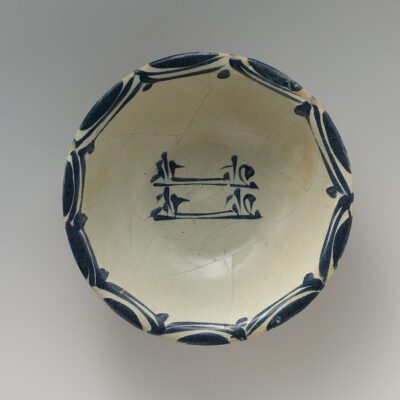
Fig.1 Ceramic Bowl Emulating Chinese Stoneware, 9th Century, Attributed to Iraq, probably Basra, Metropolitan Museum of Art, Collection, New York (Public Domain).
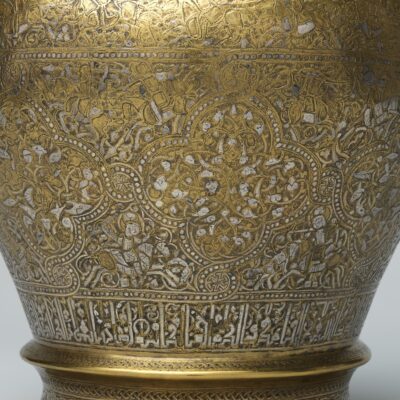
Fig. 2 Metal Ewer with Inscription, Horsemen, and Vegetal Decoration Maker: `Umar ibn al-Hajji Jaldak, A.H. 623/1226 AD, Iraq, probably Mosul, Metropolitan Museum New York (Public Domain).
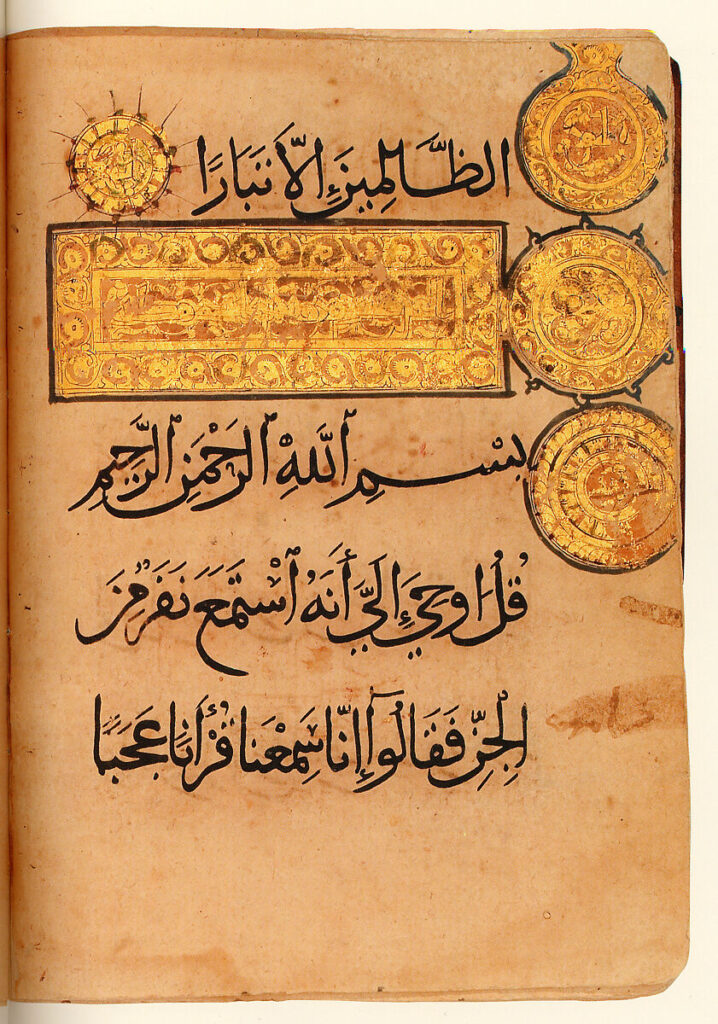
Fig. 3 Section from a Qur'an Manuscript, A.H. 588/ 1192–93 AD, Iraq, Baghdad, Metropolitan Museum of Art, New York, (Public Domain).
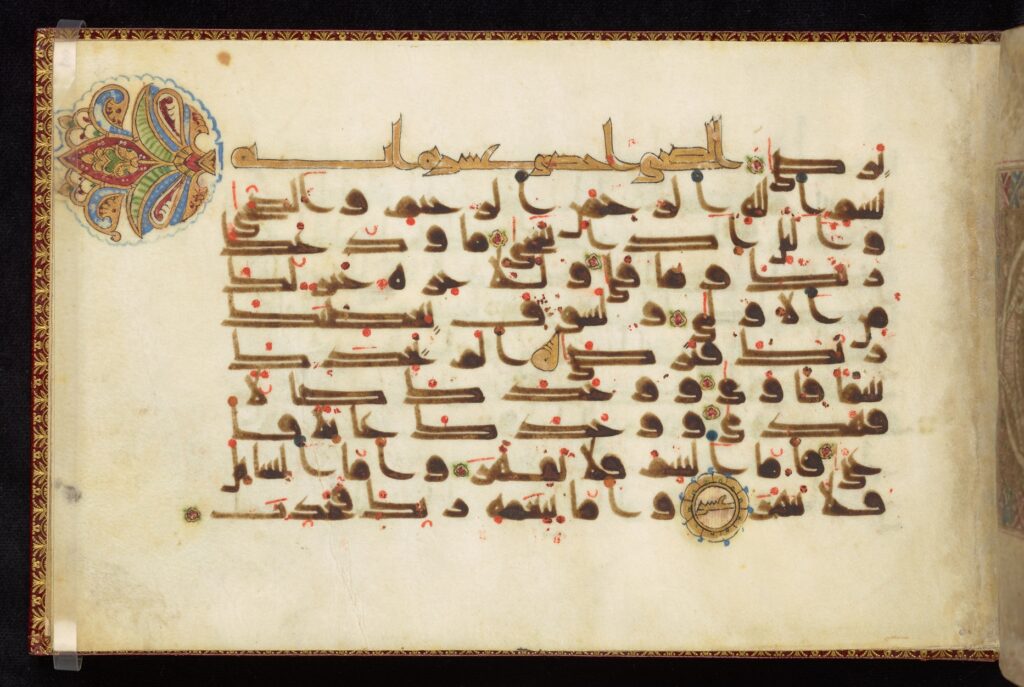
Fig. 4 Folios from an Abbasid Qur'an Calligrapher, Iraq (probably) Production date: 800-900 AD, Arabic (language) Script type: Kufic script, Chester Beatty Library, Dublin Ireland. CC BY-NC 4.0.
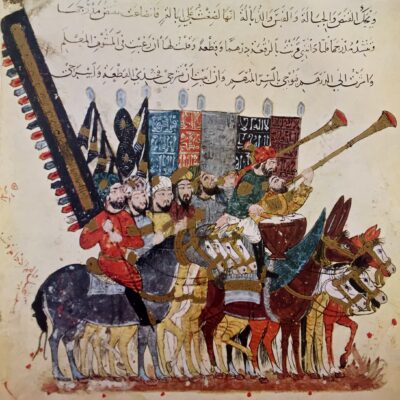
Fig. 5 Maqamat Al Hariri, 1237 AD Baghdad, Iraq, drawing by Yahya bin Mahmoud Al-Wasiti, 243X261mm, National Library, Paris, France.

Fig. 6 Mustansiriya Madrasa, established in 1227 AD, named after and built by the Abbasid Caliph Al-Mustansir in Baghdad, Iraq. Image is of detail of brick at main gate, an inscription describing the buildings patron Al-Mustansir. Image source: Bghadad, Iraqi Engineering Union/Kulbenkian Organization, 1969.
The Script:
The origin of Arabic letter and their shapes is still a matter of scholarly study and is a wide and fascinating subject, that can be traced to centuries before ancient civilizations. The most common is that the Arabic script is a development of the Nabataean script, of the 4th century AD.
Arabic was the language in which the Qur’an, the holy book of Muslims, was revealed early in the 7th century AD, when the script was written down. The writing was developed and elevated in its beauty to serve the Qur’an text. Its use became comprehensive covering science, literature, art and architecture.
“Arabic letter appeared in beautiful shapes and styles, matching the beauty of the Holy Qura’an, and this is how the aesthetic relevance of the Arabic letter began.” May Muzaffar from her article, The Arabic Letter and its Unveiling.
The Development of the Script
The kufic script, with its straight lines and sharp edges, was created in the city of Kufa in Iraq. It is known to have been used widely and gained prominence especially during the Abbasid era. From that time the development of the script grew tremendously over many years and had its own historic stories and glory. The kufic script developed into several types, old kufic, modern kufic, floriated kufic, knotted kufic, geometric kufic and several others.
The development of the script flourished during the Abbasid period in its capital Baghdad city, which was a major centre for power and culture.
The notable calligraphers and key developments to the script included:
Coloured Dots and Diacritics marks
Abu Al-Aswad Al-Du’ali (603 – 689 Iraq), introduced the red dots for the first time. Further improvements by his students Nasr bin Asim and Yahya bin Y’amour followed. An example of the red dots is shown in Fig. 4.
Then there was a third improvement by Al-Khalil ibn Ahmed Al-Farahidi (718 Oman -791 Iraq), who established the dots and diacritical vowel marks during the Abbasid era, and which are still used today in writing.
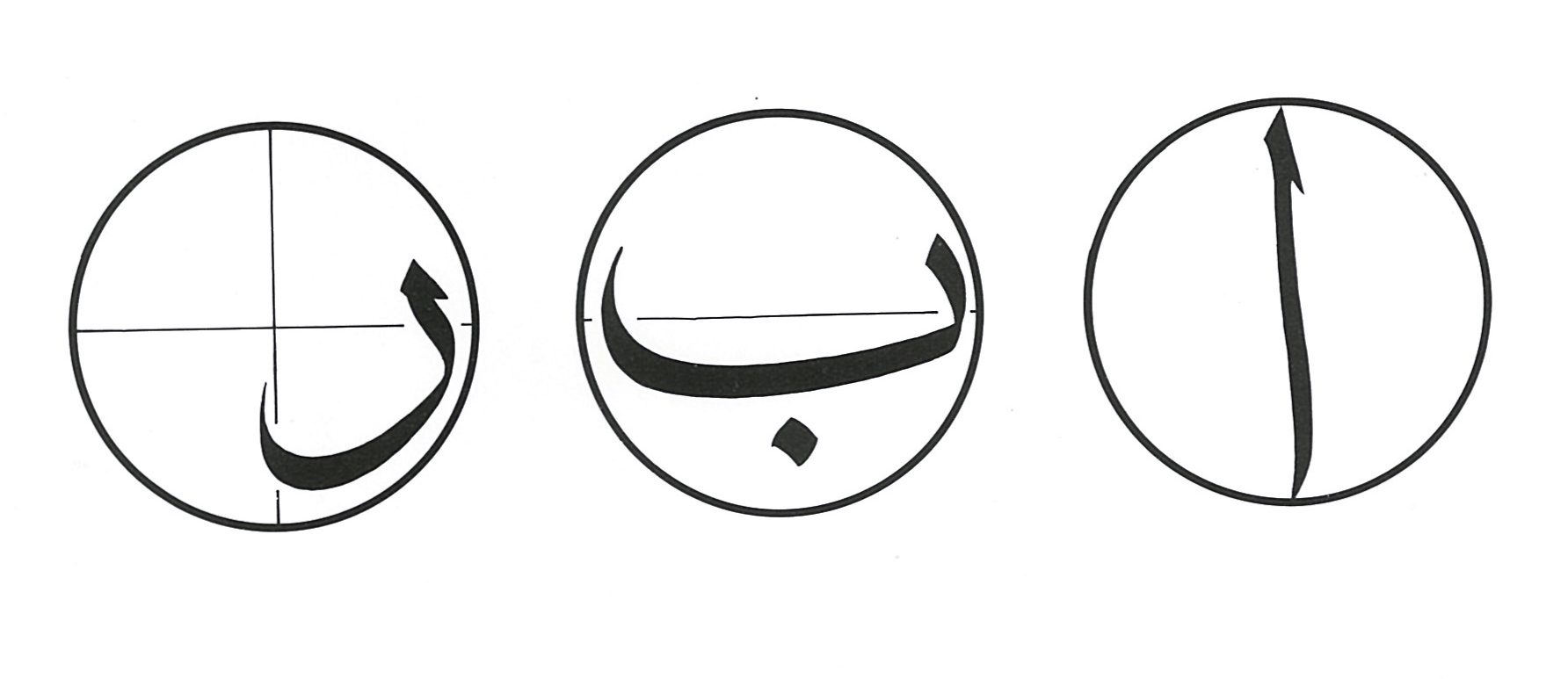
Fig. 7 Proprtioned script, using the circle as meaurment too. Image Source Massoudy, Hassan, Calligraphie Arab Vivante.
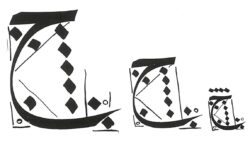
Fig. 8 Proportined Script using the dot as measermeunt tool. Image Source Massoudy, Hassan, Calligraphie Arab Vivante.
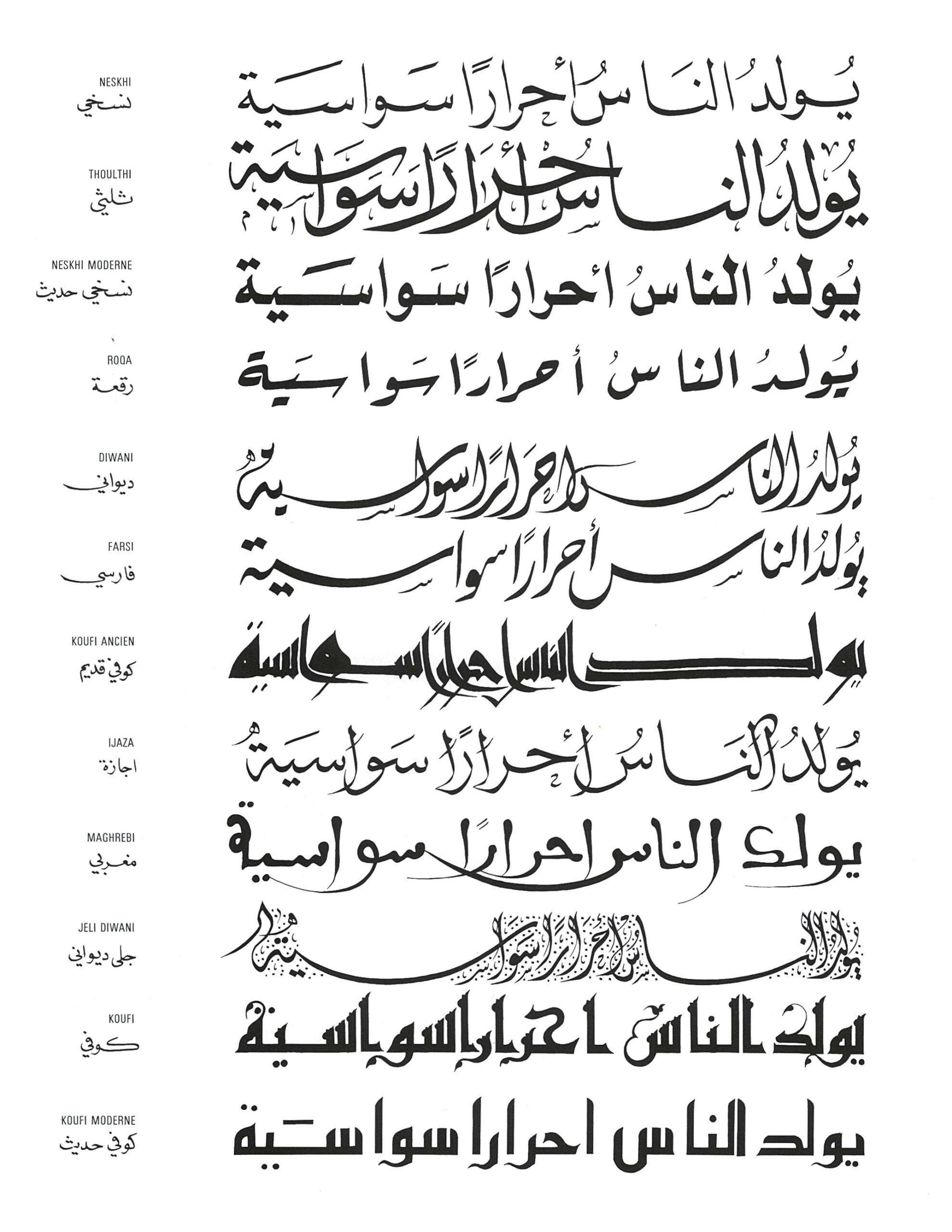
Fig. 9 The first article of the UN Human Rights Chart, written in 12 styles of arabic calligraphy. Image Source Massoudy, Hassan, Calligraphie Arab Vivante.
Proportioned Script
Ali bin Mohammed bin Muqla (855-941 Iraq), established for the first-time a geometric relation and a rule between the letters, using measurements such as circles and dots to create what is known Al-Khat Al-Mansub, and he codified the six primary scripts, Naskh, Thuluth, Muhaqqaq, Tawqi, Riqa and Rayhan.
Refinement
The system was further developed by Ibn Al-Bawwab (died 1022 Iraq). Fig. 10, pages of Ibn Al-Bawwab Qur’an conserved at the Chester Beatty Library, Dublin, Ireland. He also contributed to the development of many of the early cursive scripts (rounded scripts).
Next important figure in refining the calligraphy was Yaqute Al- Mustaisimi (1221-1298), who practiced in Iraq during the Abbasid period under al-Musta‘ṣim, the last caliph in Baghdad, before the city fell to the Mongols. Fig.11.
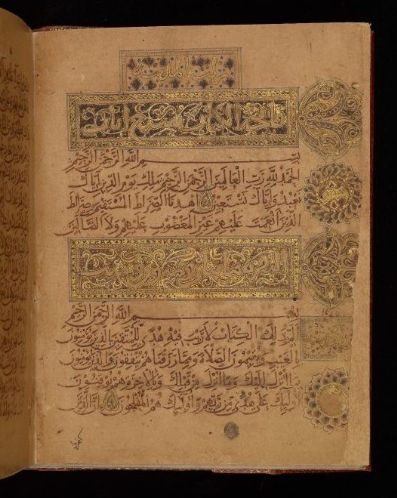
Fig. 10 Ibn Al-Bawwab Qur'an, page 14:f.9v, 1000-1001AD, Baghdad. Script type: Naskh script - Rayhan script. Item Is1431Chester Beatty Library. CC BY-NC 4.0.
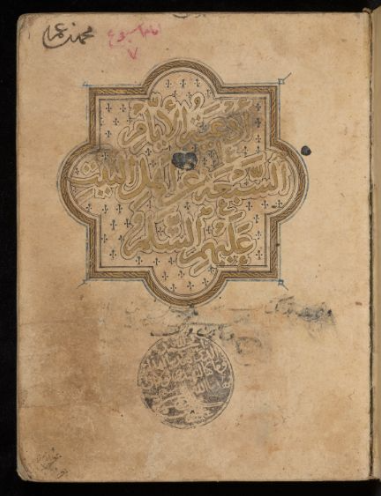
Fig. 11 Prayers for the week, copied by Yāqūt al-Musta`ṣimī (d. 1298), Production 1283 AD, Baghdad. Script type: Naskh script. Item Ar 4237, Chester Beatty Library. CC BY-NC 4.0.
Regional Expansion
Different styles and scripts of Arabic calligraphy began to evolve as Islam spread across many geographic regions. Various cultures eventually had an influence over the stylistic development of the Arabic calligraphy. These developments were based on the classic styles and or unique to certain regions. Some were used widely and some remained in use locally. The scripts that had the greatest influence were the Persian style, and more so the Ottoman styles of calligraphy that experienced the most refinement over years reaching a high level of beauty. The Persian style Nasta’liq spread to the east, central Asia and India. Others include the Mamluk style in Egypt and the Maghrebi style that was developed and used in North Africa and Spain.
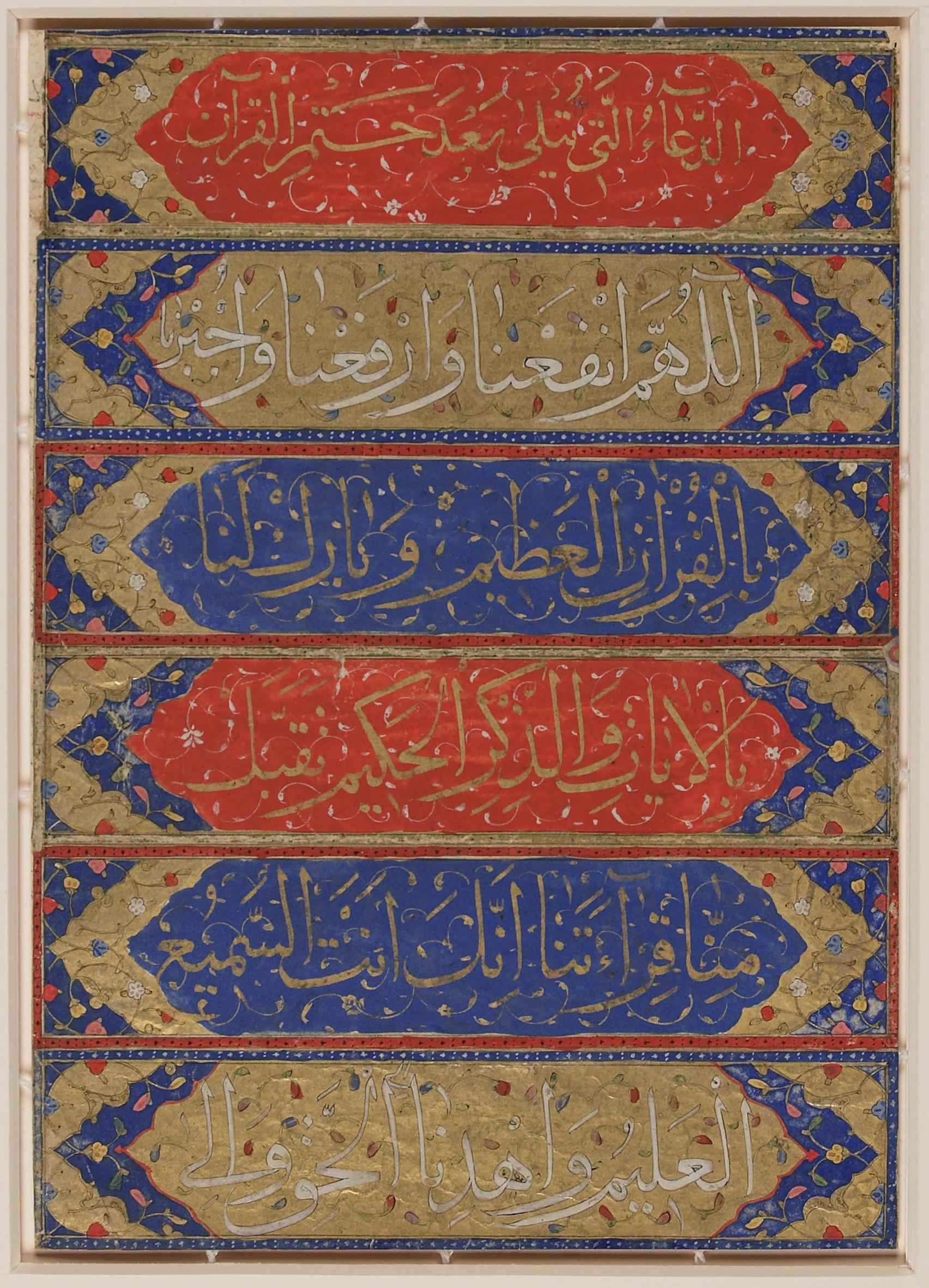
Fig. 12 Script: Ottoman naskh, Surat al-Nas and Du'a.1550-1600. Manuscript/Mixed Material. Retrieved from the Library of Congress.
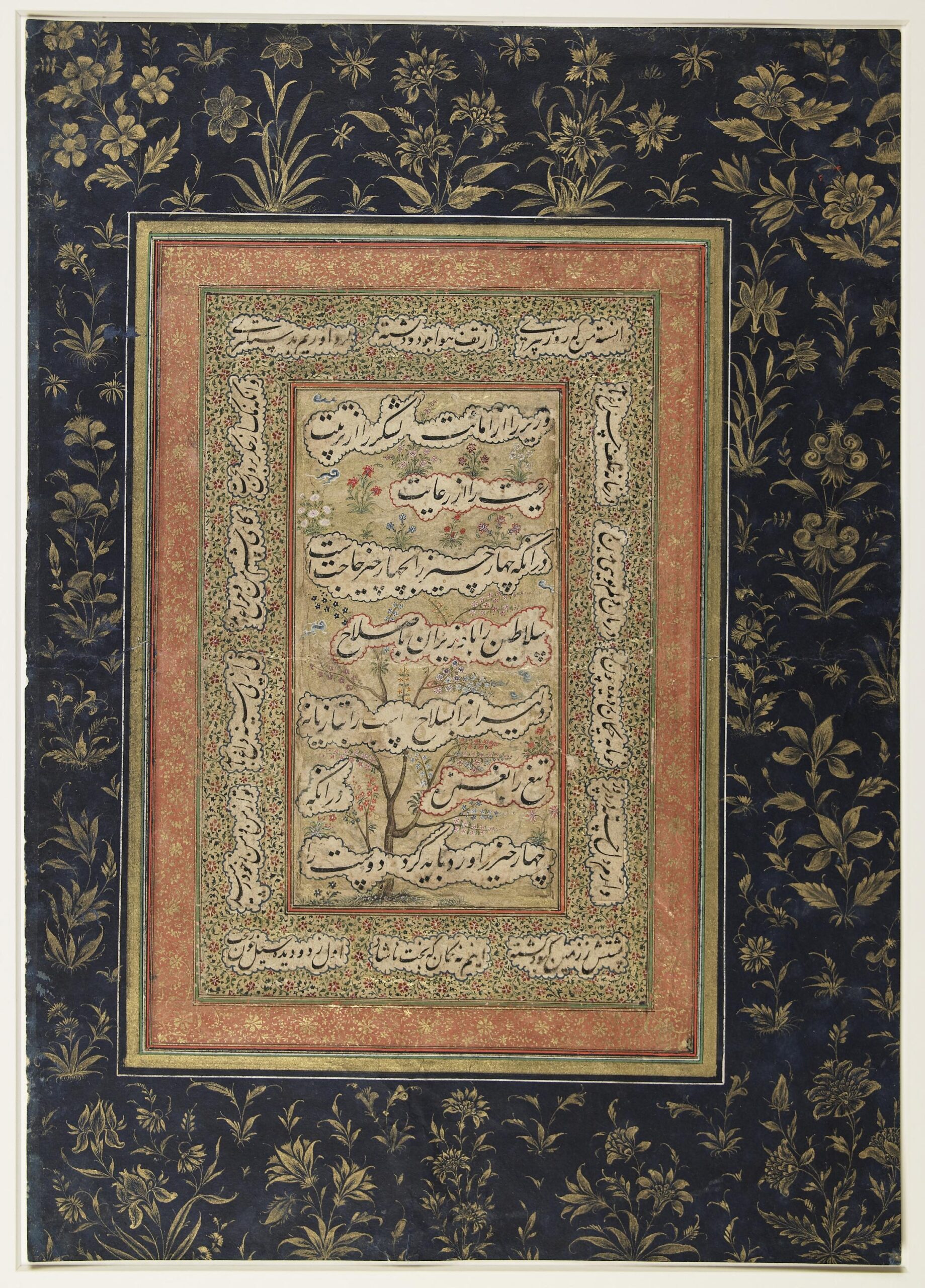
Fig.13 Magul India, Script: nasta'liq, Excerpt from Sa'di's ``Gulistan``. 17th-18th C. Manuscript/Mixed Material. Retrieved from the Library of Congress.
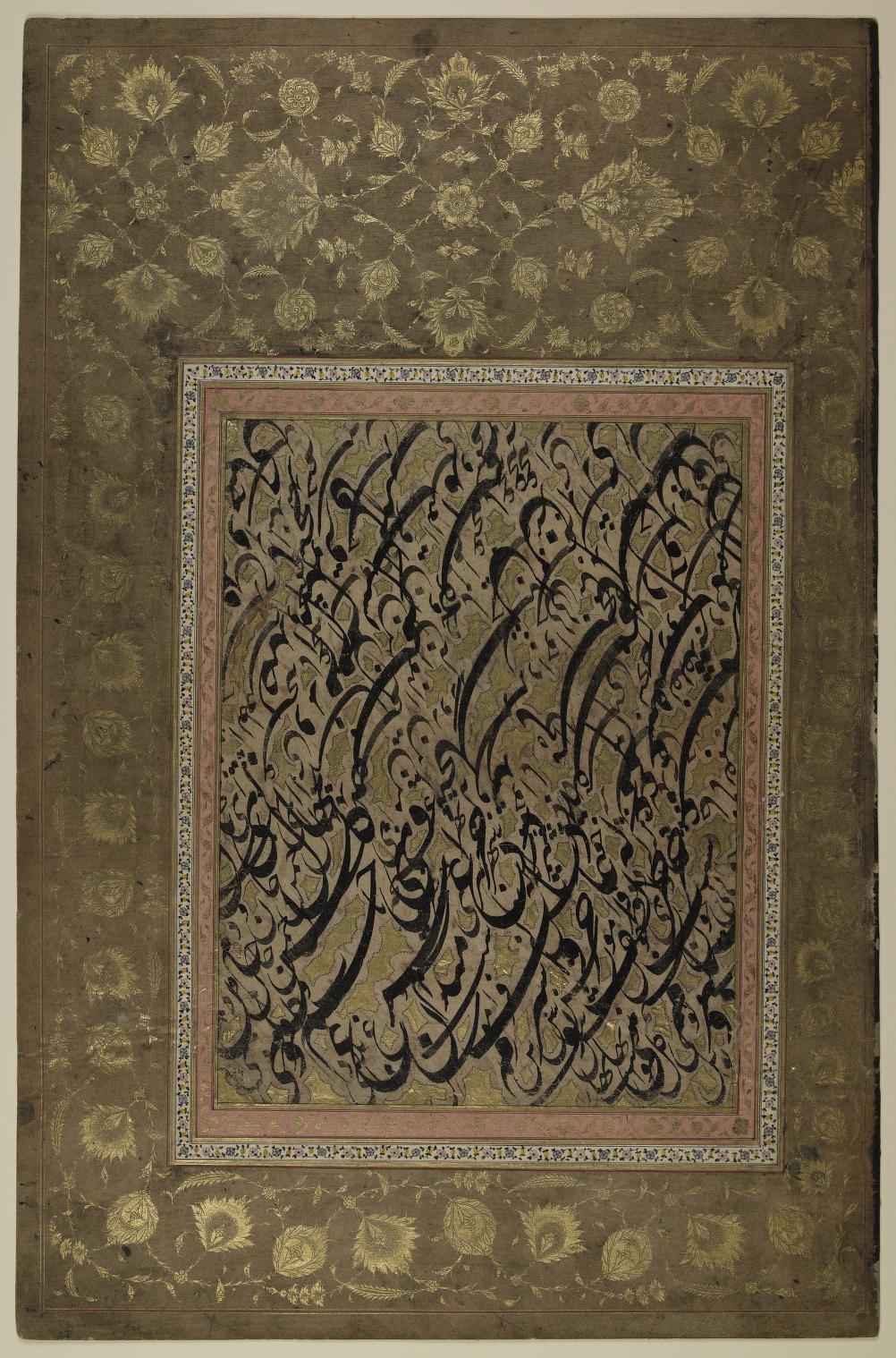
Fig. 14 Persian, Script: nasta'liq, Siyah Mashq. to 1850 -1900. Manuscript/Mixed Material. Retrieved from the Library of Congress,
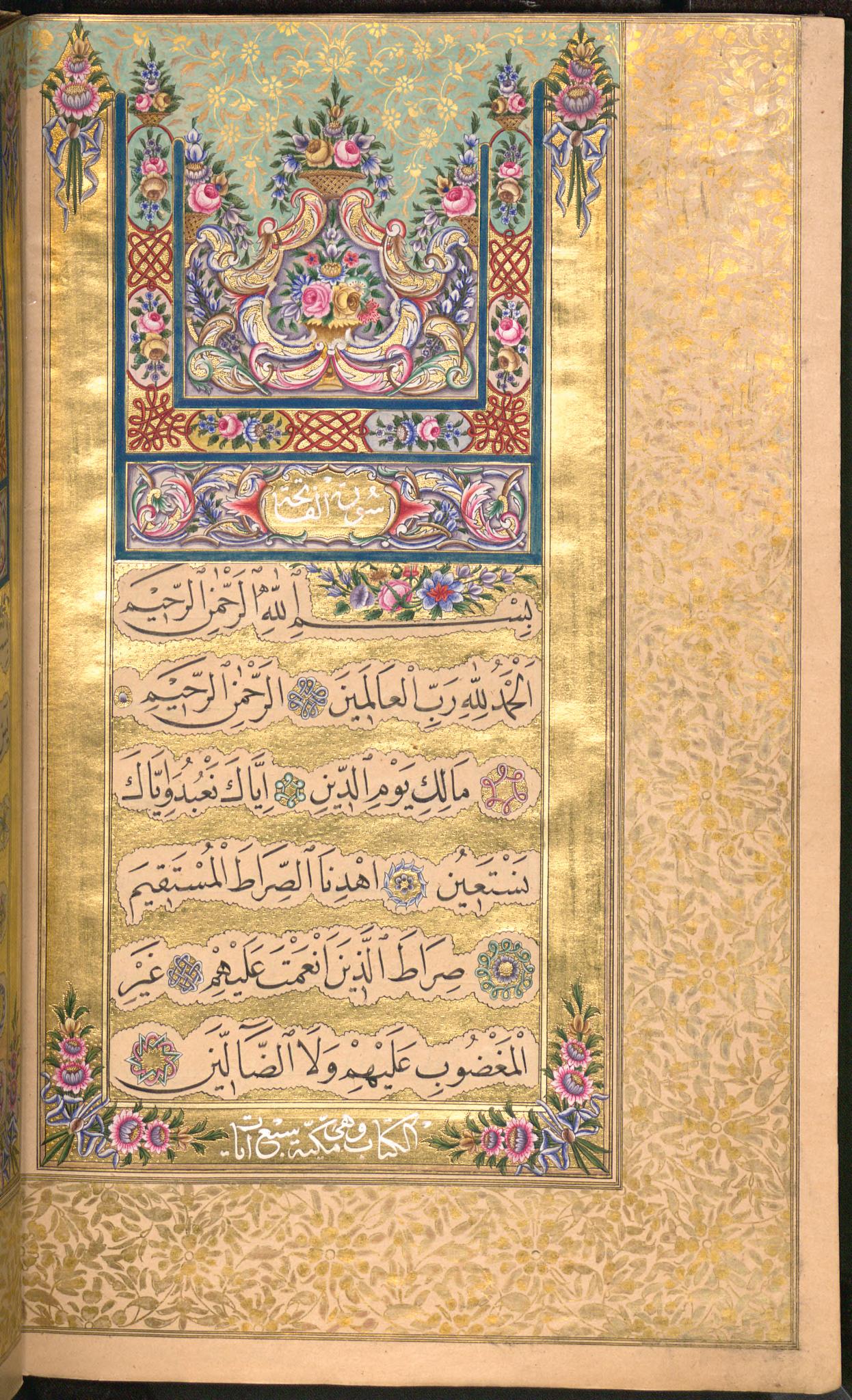
Fig. 15 Turkey, Istanbul, Prayer book of Duzdidil, 1845, Hasan Râşid, Hâfız Calligrapher, and Hüseyin Illuminator. Retrieved from the Library of Congress,
Calligraphy Tools
Arabic is written and read from right to left, it consists of 18 shapes and 28 letter sounds with diacritical marks. Around the 8th century the use of paper was introduced and became popular. The tool for writing was a reed pen, prepared and sized in a sophisticated manner to suit the different types of script. Inks were prepared from special recipes by the calligraphers each having their own personal mix. Training to become a calligrapher takes a long time to master all the techniques including the pen movement and the position of the hand and body.
Traditional Calligraphy
Traditional calligraphy art, is a fully written script that follows the rules with a controlled degree of freedom. These works are often quotations from the Quran, poetry and popular proverbs. Two main groups can be recognized; the classical style with the decorative and ornamental elements and the free style where calligraphers have used the classic elements in a newer look. The creators of these pieces are usually highly trained professional calligraphers.
Fully written script that follows the rules with a controlled degree of freedom.
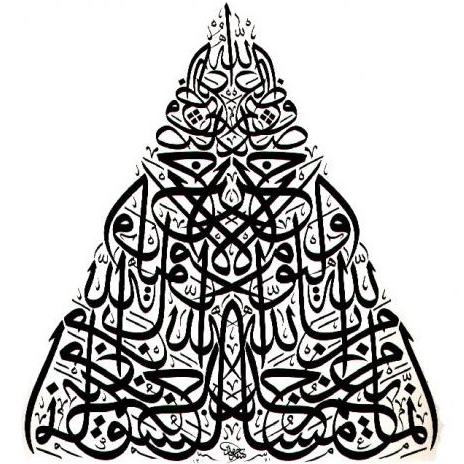
Fig. 16 Hamid Al- Amidi (1891-1982 Turkey). Script Style Thuluth.
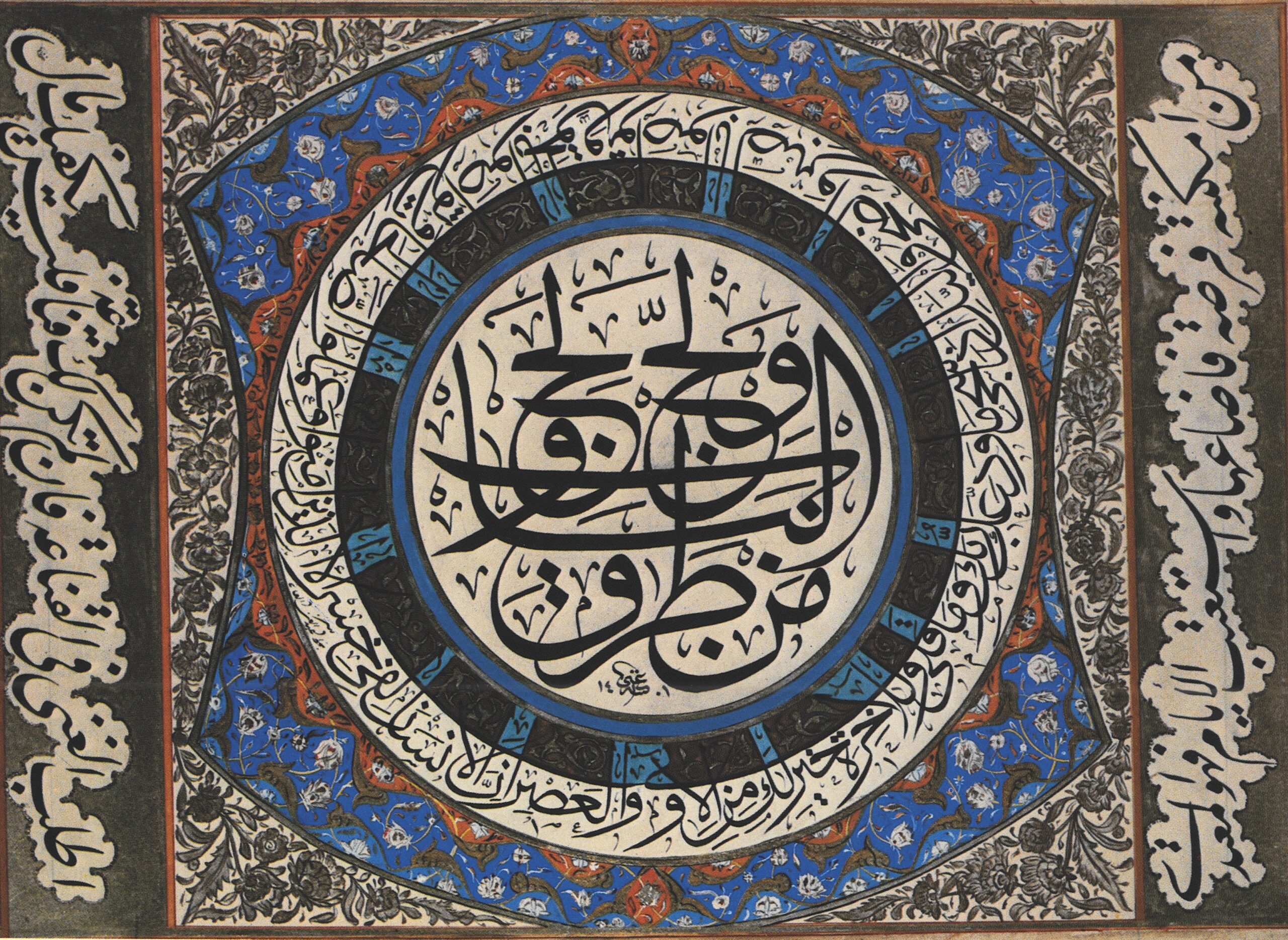
Fig. 17 Ghani Al-Ani, (b1937 Iraq) Lives in France. 63x45cm,1981.
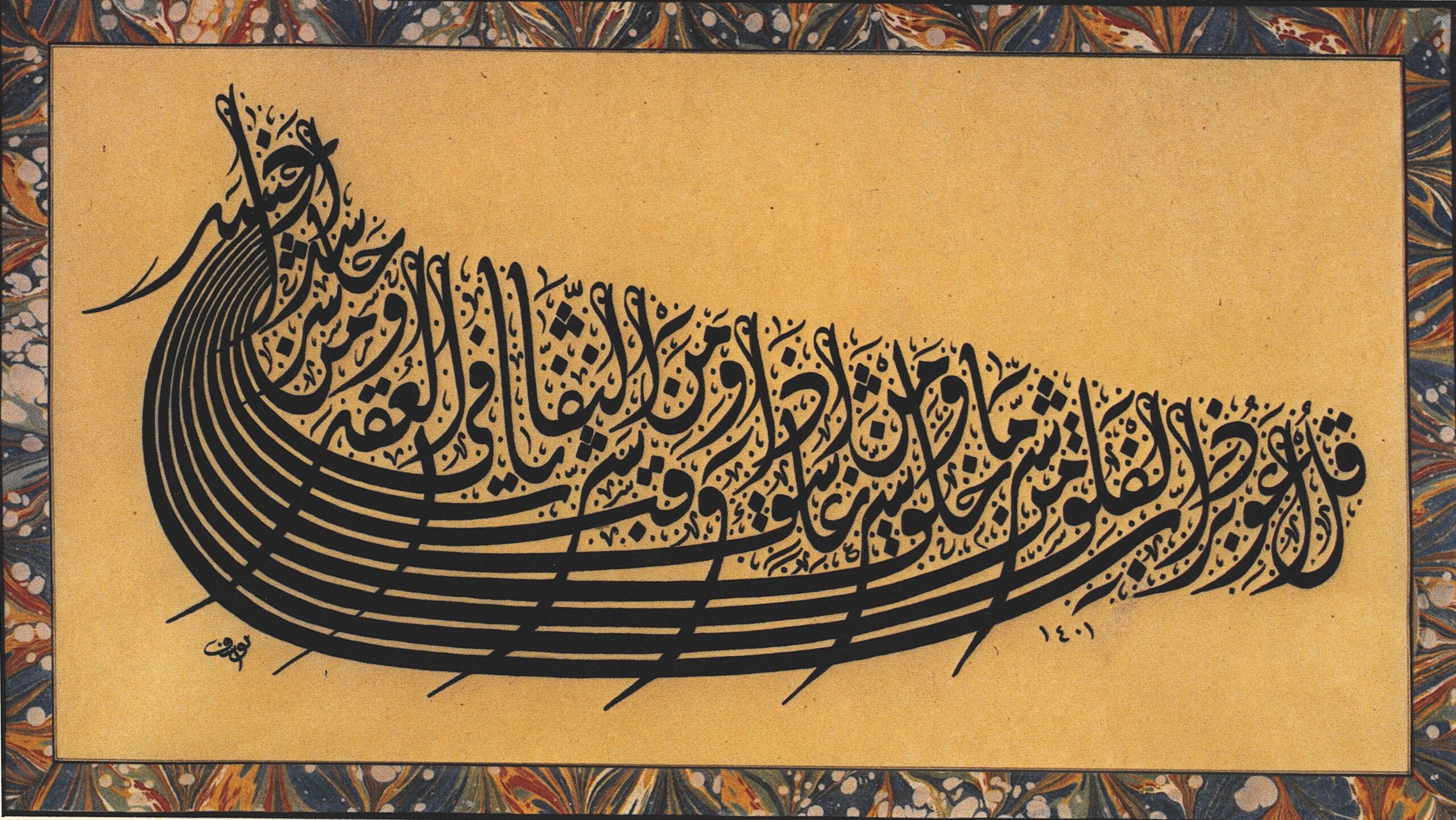
Fig. 18 Yousuf Thanoun Al-Naimi, (1931-2022 Iraq). Composition script style Jeli Dewani, boat shape 38 x 65,1981.
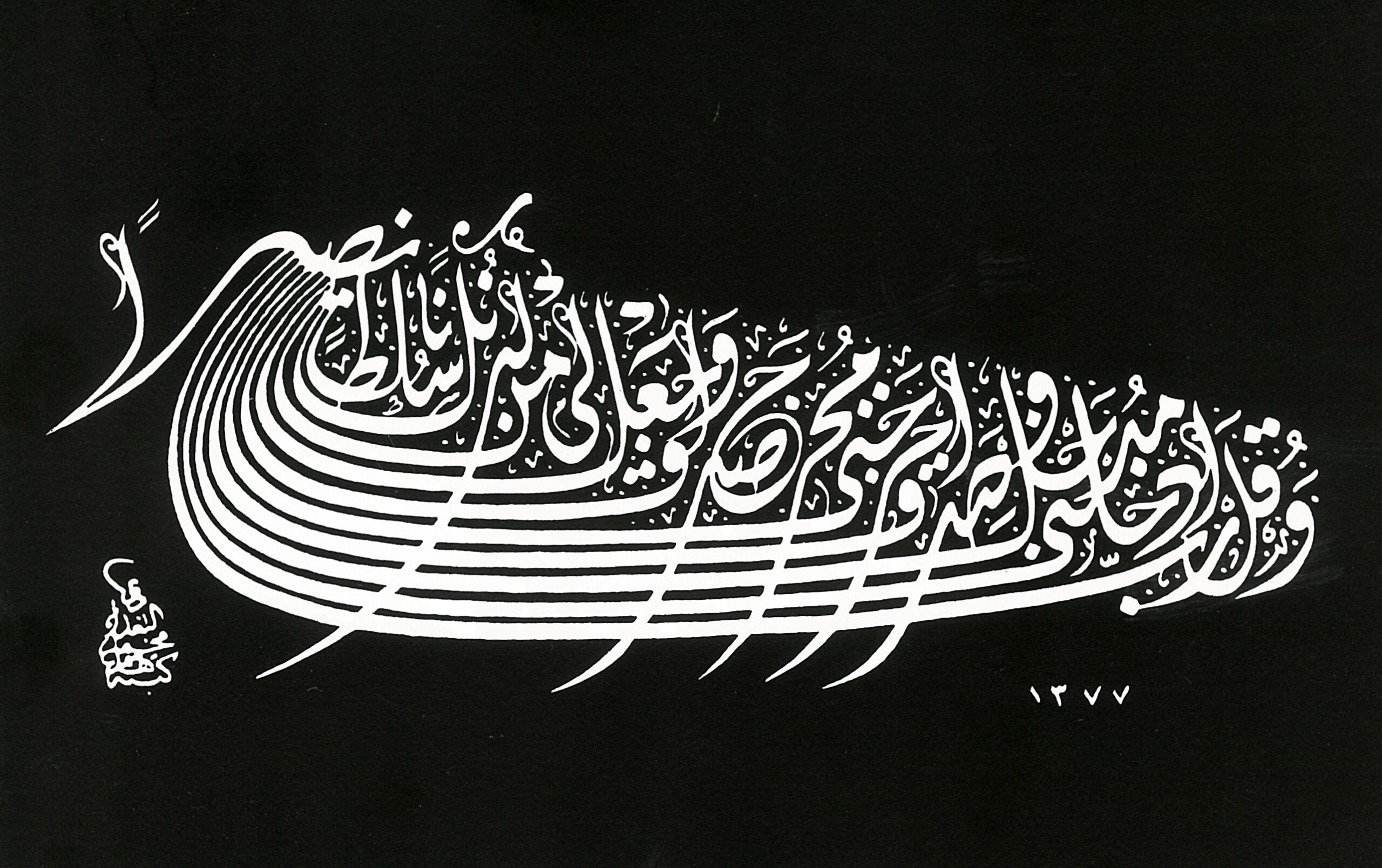
Fig. 19 Hashem Al-Baghdadi (1917-1973 Iraq). Composition, script style Jeli Diwani, boat shape,1957.

Fig. 20 Mohamed Saggar (b1934 Iraq - 2014 France). Compsition script style Jeli Dewani, in boat shape,1978.
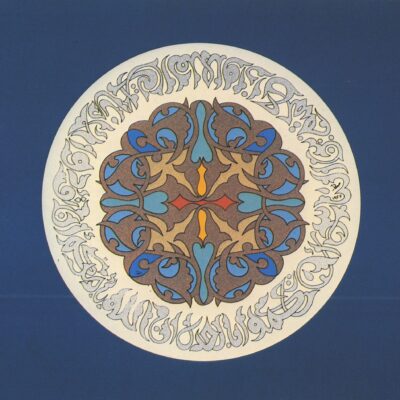
Fig. 21 Mohamed Saggar (b1934 Iraq - 2014 France),

Fig. 22 Mohamed Saggar (b1934 Iraq - 2014 France), ``Call thou unto thy Lord's path with wisdom and good exhortation``(Qur'an).1984.

Fig. 23 Mohamed Saggar (b1934 Iraq - 2014 France), ``East West home is best`` Poem by Shawqi liberally translated, 1984.
Fine Art Calligraphy: The Pioneers
Calligraphy took its new approach when artists started to use letters and script in their work. This change was started in the 1940s by the few who are considered the pioneers. It is led by Madiha Umar, and since then starting in the mid sixties a number of artists and approaches have emerged. Calligraphy no longer obeys the rules, and applications are limited only to the artist’s imagination. This move is considered very influential and is often referred to as “Al Hurufiyya”. The creators of such pieces are no longer only calligraphers, but also artists with no formal training in calligraphy.
Al-Hurufiyya is best covered and analyzed in depth in Charbel Dagher book “Arabic Hurufiyya”, 1990. Here the author considered, Madiha Umar being the pioneer followed by a group of artists who were the first to apply Al-Hurufiyya in their work.
Calligraphy no longer obeys the rules, and applications are limited only to the artist’s imagination.
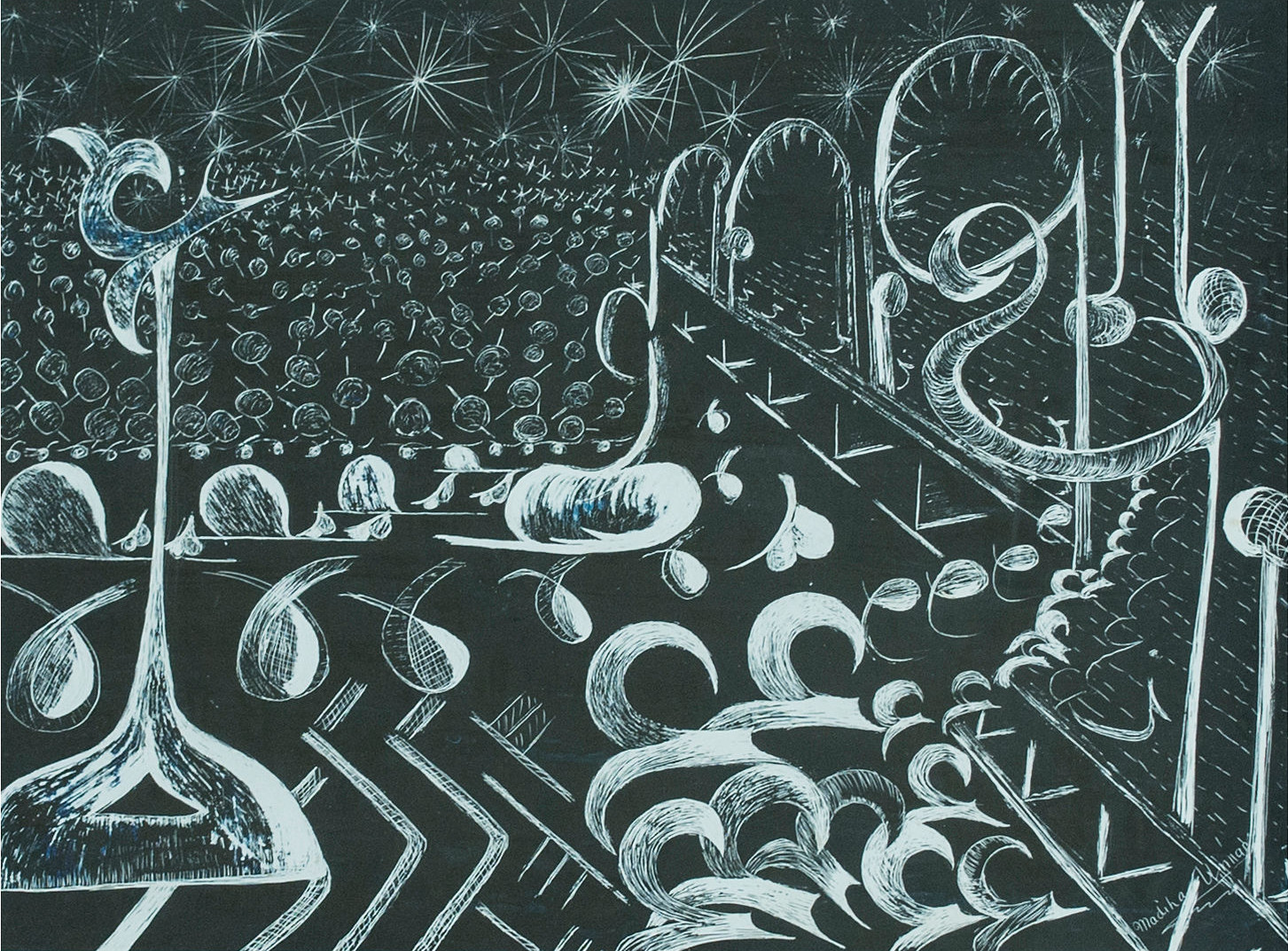
Fig. 24 Madiha Umar, (b 1908 Syria - 2005 Jordan) , active in Iraq and USA , ``Concert`` 1948.

Fig. 25 Shakir Hassan Al-Said, (1925-2004 Iraq), ``Writing on a wall`` 1978, acrilic/oil on wood, 100x90cm.
Fine Art Calligraphy: Forms and Patterns
In this category the calligraphy clearly dominates visually the art work, forming modern shapes and patterns. The text, whether is one letter or several words, are symbolic and may or may not be legible, pushing its esthetics to the limit. Calligraphy becomes aesthetic symbols individually or collectively immersed in colours creating intense beauty. Naturally the text does not obey any rule and the artist is not necessarily a calligrapher.
Calligraphy dominates visually the art work, forming shapes and patterns.
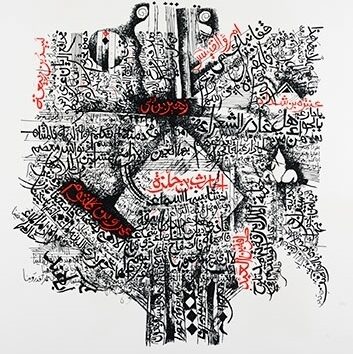
Fig. 26 Dia Al-Azzawi (b 1939 Iraq), lives in UK, ``Seven Golden Odes`` 1978, silkscreen on paper, 100x700cm.
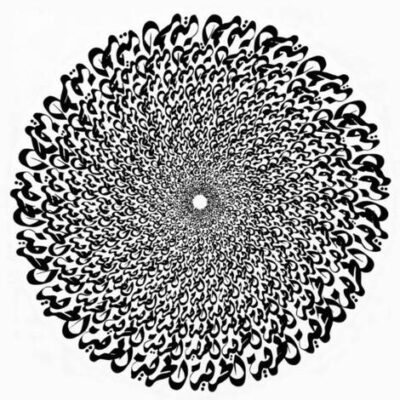
Fig. 27 Hassan Al-Massoudy (b 1944 Iraq), lives in France. ``Librete``. Image Source Massoudy, Hassan, Calligraphie Arab Vivante.
Calligraphy becomes aesthetic symbols
individually or collectively immersed
in colours creating intense beauty.

Fig. 28 Hussein Zenderoudi (b 1937 Iran). Lives in France. ``Crowns of Love`` 1972, oil on canvas, 413/4x56 3/4in.

Fig 29, Nja Mahdawi (b 1937 Tunisia). Calligram on Malamine V. Composite paper coated with laminated melamine resin, 120×120 cm, 2009.
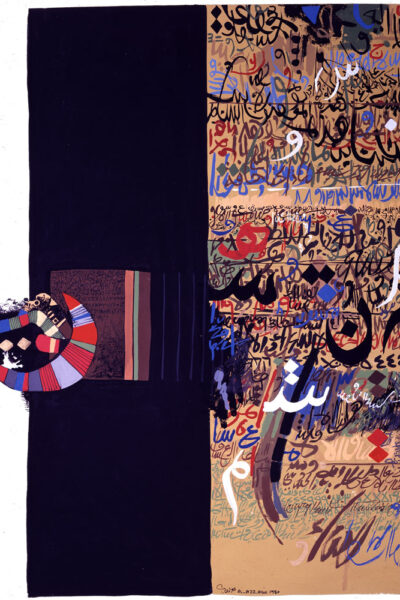
Fig. 30 Dia Al-Azzawi (b 1939 Iraq) Lives in UK, ``Manuscript ``,1980. Gauache/Paper 38x70cm.
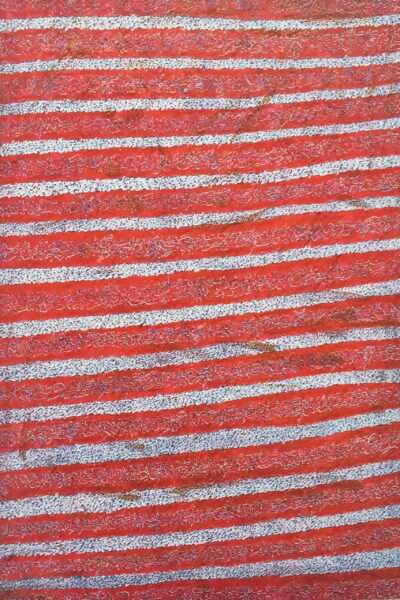
Fig. 31 Mehdi Qotbi (b1951 Morocco), ``Portee``, 1985, mixed media on paper, 64X44 cm

Fig. 32 Kamal Boullata, (b 1942 Palastine - 2019 Germany), ``Revolution`` 1978.
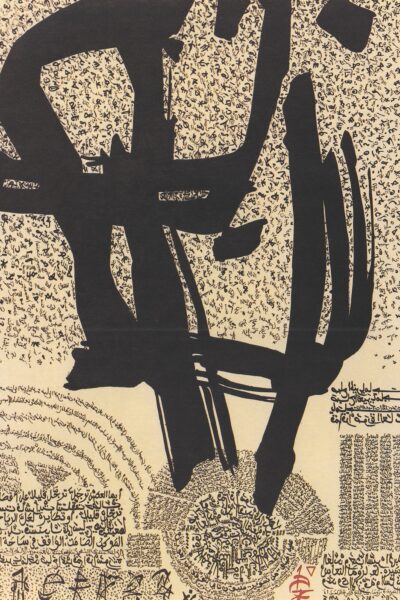
Fig. 33 Rachid Koraichi (b 1947 Algeria) etching ``good morning majid``1984, poetry by Mahmoud Darwish supported callegraphy by Hassan Massoudy.

Fig. 34 Yousef Ahmed, (b 1955 Qatar), ``Calligraphy`` 1980 etching,
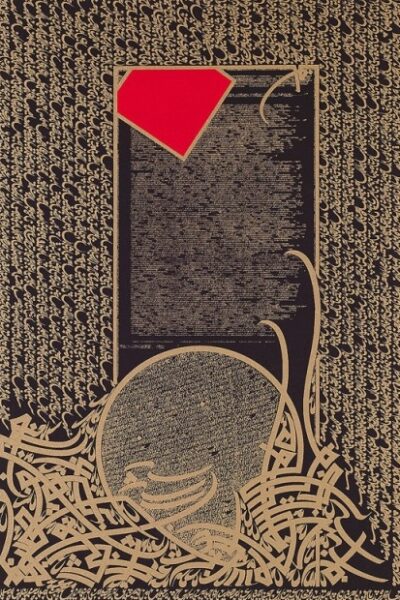
Fig. 35 Nja Mahdawi (b1937 Tunisia).
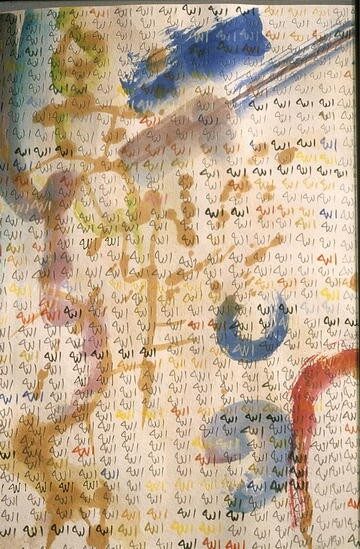
Fig. 36 Etel Adnan (1925 Lebenon - 2021 France).
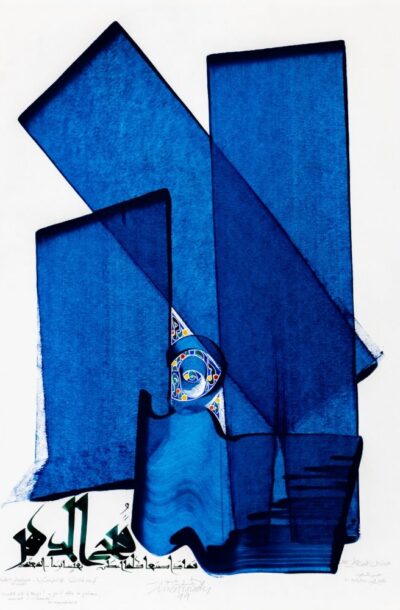
Fig. 37 Hassan Al-Massoudy (b 1944 Iraq), lives in France. ``Al-Mu'tamid Bin Abbad``,1999. Acrylic on paper. Image source: Jordan Natioanl Gallery of Fine Art.
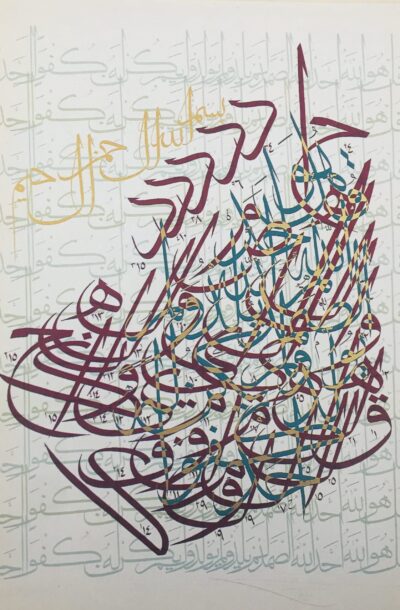
Fig. 38 Ahmed Mustafa (b 1943 Eygept ) ``Composition Based on Surat Al-Ikhlas``, 1983 silk screen print.
Fine Art Calligraphy: Integrated
Here the Arabic calligraphy is integrated with fine art elements and the calligraphy itself is neither the major visual attraction nor it is the dominating element in the space. The calligraphy is part of other fine art elements, they all merge and melt together.
The calligraphy is mostly legible, but can be illegible as well. The artist collaborates with the literature such as poetry and writings, illustrating and rewriting the literature into fine art elements.
.
Fine art and calligraphy are creatively integrated. Poems are rewritten by fine art elements.
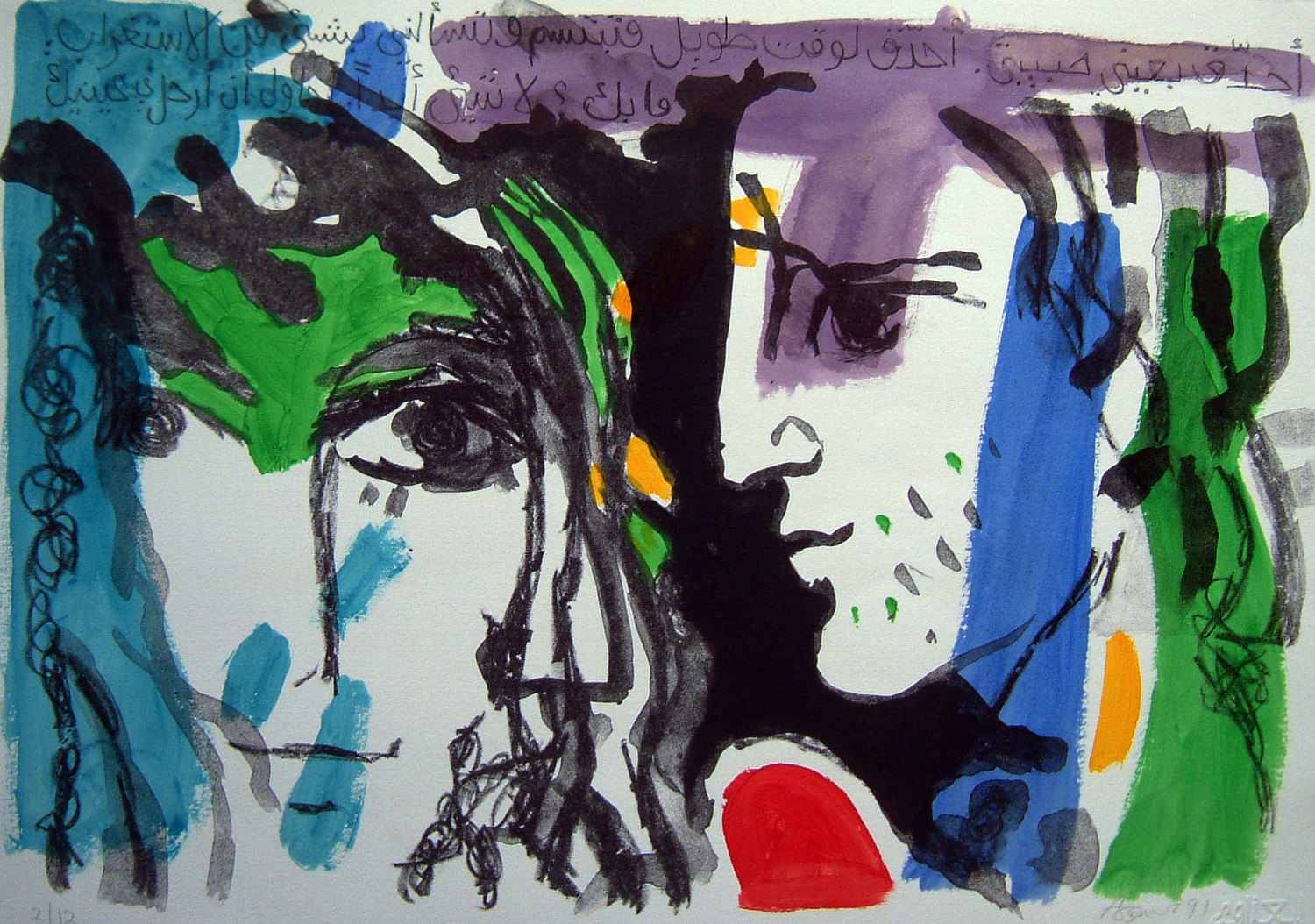
Fig. 39 Dia Al-Azzawi, (b 1939 Iraq) Living in UK. ``The Crane`` 1990. Text by Halim Barakat. Hand -Coloured Lithograph 38x55cm.

Fig. 40 Suad Al-Attar (b 1940 Iraq) Lives in UK. ``If I can only reach you...my mom my love`` 1991, pen on paper, 5x7 inches.
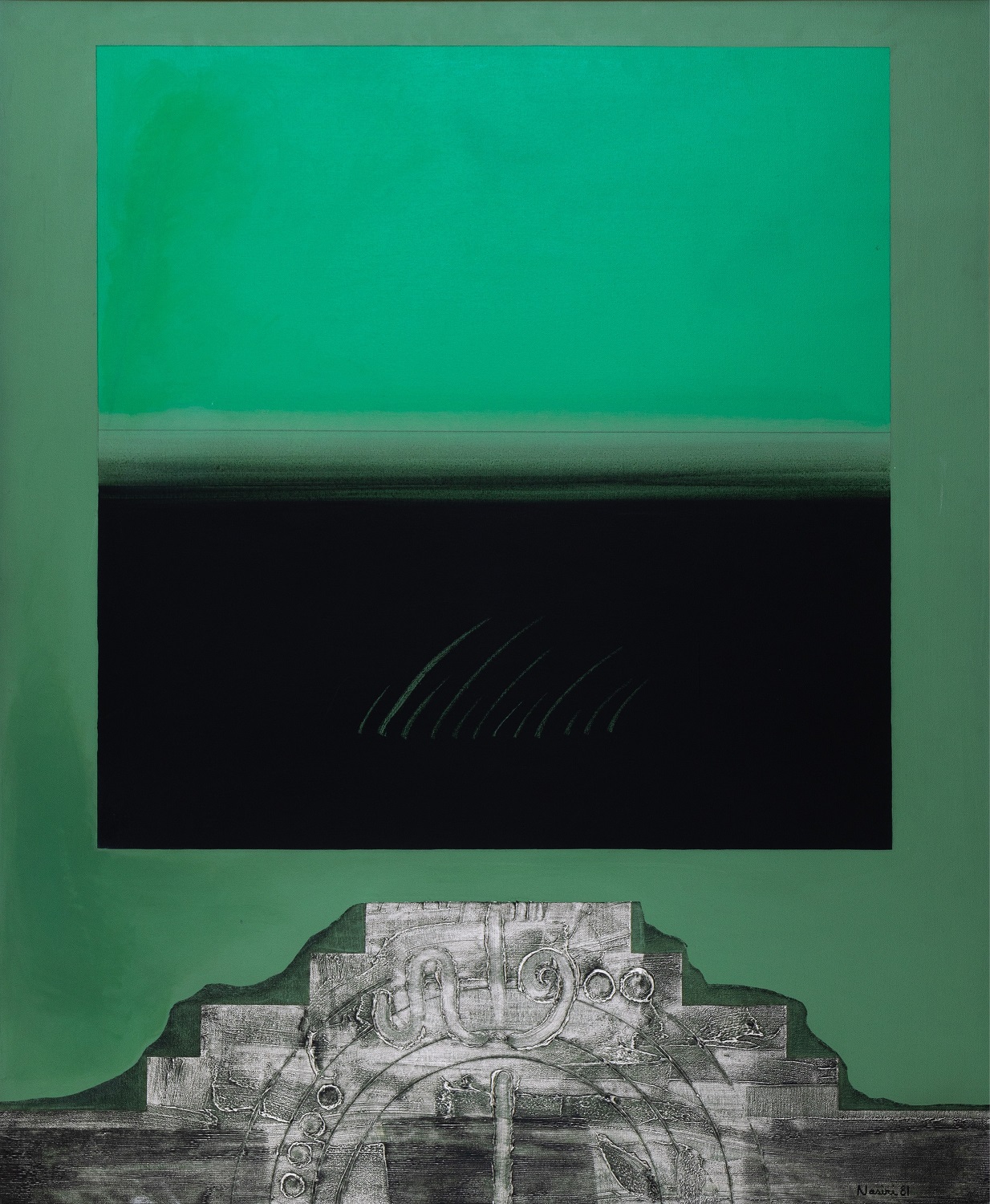
Fig. 41 Rafa Al-Nassari (1940 Iraq - 2013 Jordan), ``Natural Visions`` 1981, acrylic/canvas.
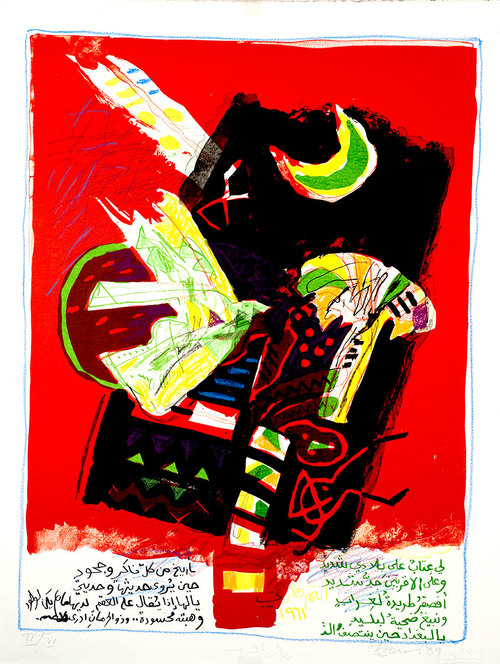
Fig. 42 Dia Al-Azzawi, (b 1939 Iraq) lives in UK.``Al Jawahiri Verses``1989. Hand coloured lithograph.

Fig. 43 Rachid Diab (b1957 Sudan). `` Memorey of Echoes`` 1998.
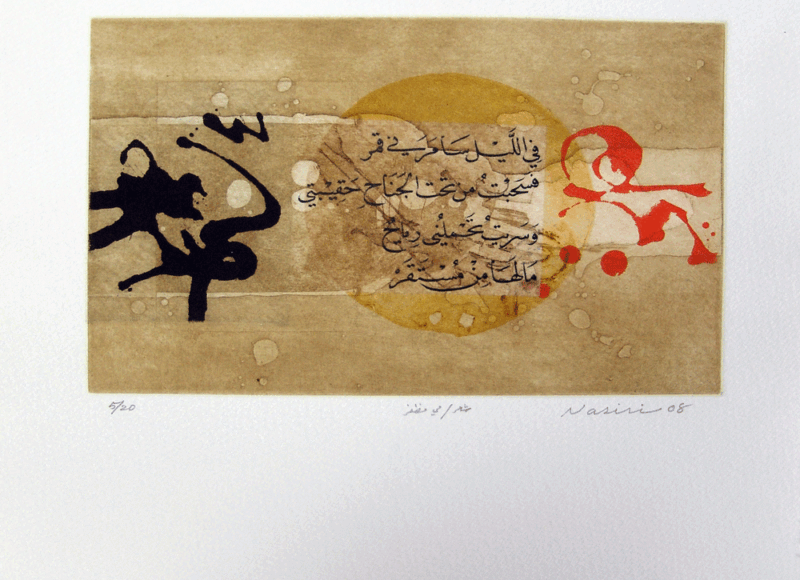
Fig. 44 Rafa Al-Nassari (1940 Iraq - 2013 Jordan), ``Book of 7-From the Distant Land -6`` 2008, Poem by May Muzaffar. Jordan Natioanl Gallery of Fine Art.

Fig, 45 Mohamed Melehi (1936 - 2020 Morroco). ``Untitled`` 1982.
Fine Art Calligraphy: Post 2000 – Emerging Artists and Trends
Popularity of fine art calligraphy continued after 2000 and flourished further. The appreciation of the art by private sector, collectors with the support of art organizations, art foundations and museums had an effect on its development. The well established museums increased their collections of both traditional and fine art calligraphy, while new museums and art organizations were established especially in the Middle East. Most of the large museums have their collections on line, making it easier to access, study and enjoy. These establishments are nourishing and supporting the art including the fine art calligraphy, while at the same time educating the public and involving local communities in art related activities.
Social media has its role spreading the work. Accessibility and awareness have increased, and almost every established and emerging artist have their own website, Facebook, Instagram and other social media, where they are showing their work.
Artists are no longer solely calligraphers and some times not just fine art artists. They are designers in various professions such as graphic design, brand design, interior design, font design, and jewellery design – and they are working in multiple fields at the same time.
Post 2000 Artists further enriched the movement of Hurufiyya.
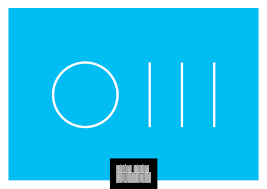
Fig. 46, Muiz Anwar, UK. Morse Code Arabic Series.
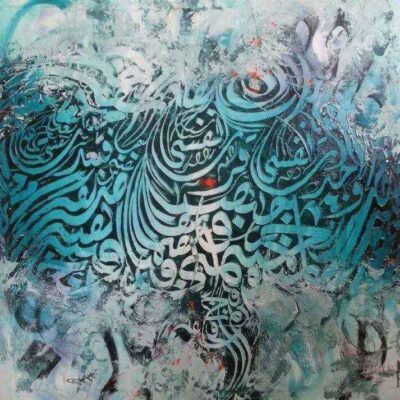
Fig. 47 Jassim Mohammed, (b1970) Iraq. Image source: Jordan Natioanl Gallery of Fine Art
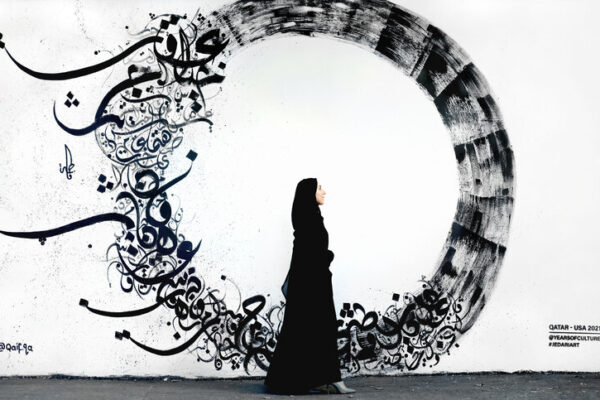
Fig. 48 Fatima Al-Sharshani, Qatar. ``Never Ending / Endless Mural`` 20021. Part of a larger project: 2021 Qatar-USA Year of Cultur. Image source: Portland Street Alliance.
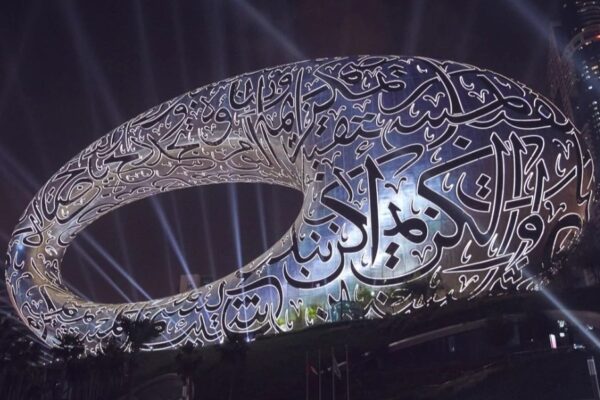
Fig. 49 Mater Bin Lahej (b1968 UAE). Museum of Future opened 2022 Dubai, UAE. Architect Killa Design. Image source: Time Out Abu Dhabi.
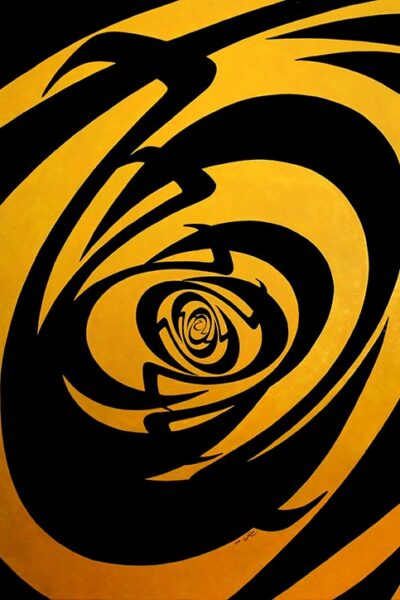
Fig. 50 Behman Panahi (b1967 Iran), Musicalligraphy ``Vibration``. Acralic on canvas 2018,145x175 cm.
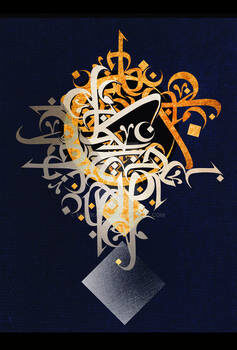
Fig. 51 Malik Anas Al-Rajeb (b1976 Iraq).

Fig 52, Mater Bin Lahej, (b1968 UAE), ``Love``, custom hand made carpet in collaboration with Illulian.
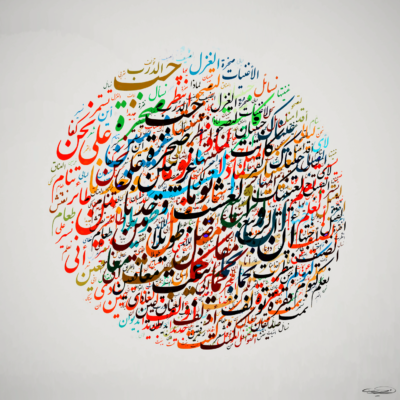
Fig. 53 Khalid Shaheen born in Jordan lives in UAE, ``Strangers`` poem by Mahmoud Darwish, 2021.

Fig. 54 Ghada Amer, (b1963 Eygpt), lives in US. ``35 Words of Love`` 2011, Bronze Sculpture.

Fig. 55 Khalid Shaheen, born in Jordan lives in UAE. ``Synoyms of Love in Arabic, Gharam-Hob``, 2020.
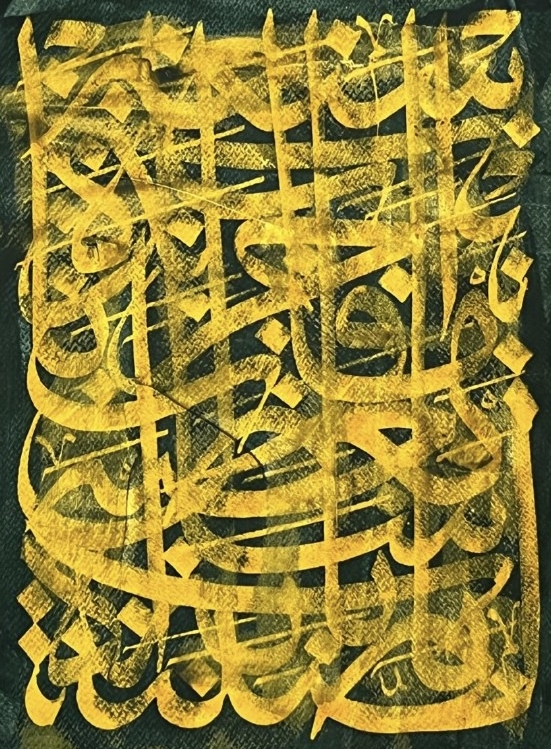
Fig. 56 Khaled Mohammed Al-Mutlaq, Saudi Arabia. Image source: Arab News

Fig. 57 Mawada Muhtasib, (b1995), Saudi Arabia. ``Fate`` 40x30 inch
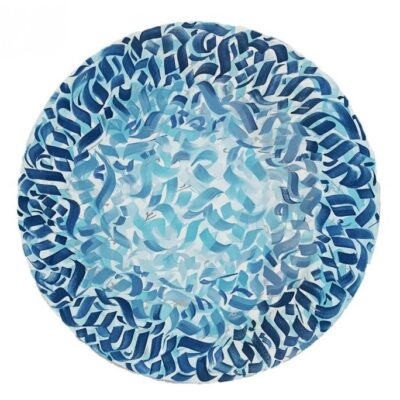
Fig. 58 Mawada Muhtasib (b1995), Saudi Arabia. ``Generosity`` Layers of Arabic Calligraffiti of Ibn al Rumi, 2017. 30 inch diameter

Fig. 59 Mawada Muhtasib (b1995), Saudi Arabia. ``Mother `` 60x60 cm canvas, acrylic paint.
The Visual Journey of the Art of Arabic Calligraphy Continues.
Cover Image
Dia Al-Azzawi (b.1939 Iraq) lives in UK, poem by Addonis,1990. Lithograph 1100x385mm
Background
The article is based on a short abstract created with the advice of Dia Al-Azzawi in 1992 as a proposal for an exhibition.
Images
Artists websites, Artists exhibition catalogues and booklets and as indicated.
Bibliography
- Artists websites.
- Artists exhibition catalogues and booklets.
- Al Massoudy, Hassan “Calligraphie Arab Vivante”, 1981.
- Ettingghausen, Richard, “Arab Paintings”, 1973, published by the Minstry of Information, Baghdad, Iraq.
- Unit 2 The Metroplitain Musuem of Art, New York, ” the Arabic Script and the Art of Caligraphy”.
- Porter, Venitia, “World into Art. Artists of the Modern Middle East” Dubai 2008.
- The Royal Society of Fine Arts, edited by Ali, Wijdan, “Contemporary Art from the Islamic World”1989.
- Dagher, Charbel, “Arabic Hurufiyya”, 1990.
- Muhannad Salhi, Arabic, Persian, and Ottoman Calligraphy Sheets at the Library of Congress – Part 1, Part 2 and Part 3. 2021.
- May Muzaffar, “The Arabic Letter and its Unveiling ” section in “The Arab Artists, The Art Library, Rafa Nasisr” 2021.
- Museums: British Museum, London, UK. Metropolitan Meuseum of Art, New York USA. Chester Beatty Library, Dublin, Ireland. Jordan Natioanl Gallery of Fine Art, Amman Jordan. Lovre, Paris France. Library of Congress, Washigton DC, USA. Royal Ontario Museum, Toronto, Canada.
Notes:
Dimensions of art pieces, as avialble and may not match image shown.
Appendix
Metropolitan Musem of Art, New York, USA
Fig. 1, Ceramic Bowl Emulating Chinese Stoneware, 9th Century, Attributed to Iraq, probably Basra, Earthenware; painted in blue on opaque white glaze, H. 2 3/8 in. (6 cm) Diam. 8 in. (20.3 cm). The Arabic word ghibta (happiness) in Kufic script , is repeated twice in cobalt blue at the center. Metropolitan Museum Collection, New York (Public Domain). This bowl, made in Iraq, is an example of the earliest Chinese-inspired vessels produced in the Near East. The Metropolitan Musuem of Art, New York, USA.
Fig. 2, Metal Ewer with Inscription, Horsemen, and Vegetal Decoration This lavishly decorated object is inscribed around the neck ,Maker: `Umar ibn al-Hajji Jaldak. Date: dated A.H. 623/1226 CE. Geography: Attributed to Iraq, probably Mosul. Medium: Brass; inlaid with silver and black compound. Dimensions: H. 14 1/2 in. (36.8 cm), W. 12 1/16 in. (30.6 cm), Diam. 8 3/8 in. (21.3 cm). The Metropolitan Musuem of Art, New York, USA.
Fig. 3,Title: Section from a Qur’an Manuscript, Date: dated A.H. 588/ 1192–93 CE, Geography: Made in Iraq, Baghdad, Medium: Ink, gold, and opaque watercolor on paper, Dimensions: H. 8 3/16 in. (20.8 cm), W. 5 11/16 in. (14.5 cm), Often Qur’ans were divided into thirty sections, each called juz’. This manuscript represents portions of the twenty‑ninth juz’ of such a set. A colophon survives on another section, providing the date. The text blocks on its pages consist of only five lines of muhaqqaq script, providing a sense of monumentality. Gold kufic script within illuminated frames and margin medallions distinguish the chapter headings, and gold illuminated disks mark the verses. The Metropolitan Musuem of Art, New York, USA.
Chester Beatty Library, Dublin, Ireland
Fig. 4, Folios from an `Abbasid Qur’an Calligrapher and production place: Unknown Iraq (probably) Production date: 800-900 Dimensions: 134 mm x 211 mm x 10 mm (height x width x depth) Material: Parchment (material)Pigment (material)Ink (material)Gold Language: Arabic (language) Script type: Kufic script. Chester Beaty Library, Dublin, Ireland. CC BY-NC 4.0.
h#ps://chesterbea#y.ie/about/copyright-2/
Fig.10, Description:
Fig.11, Prayers for the week (Ad`iyat al-ayyām al-sab`a), copied by Yāqūt al-Musta`ṣimī (d. 1298). Codex, ink, colours and gold on paper, 37 folios, Arabic text in naskh script, with illuminated introductory title cartouche (fol. 1r) and 7 headings (sarlawh, fols. 1v, 6r, 10v, 16r, 20r, 25v, 33r), Prayers for the days of the week (Ad`īyat al-ayyām al-sab`a), colophon (fol. 36r) signed Yāqūt al-Musta`ṣimī (d. 1298), Baghdad, Iraq, 11 Dhu’l-Hijja 682H, 12 March 1283.
Library of Congress, Washington DC, USA
Fig.12, Turkey, Script: Ottoman naskh, Surat al-Nas and Du’a. to 1550-1600,. Manuscript/Mixed Material. Retrieved from the Library of Congress, www.loc.gov/item/2019714472/
Fig.13, Magul India, Script: nasta’liq, Excerpt from Sa’di’s “Gulistan”. 17th-18th Centuries. Manuscript/Mixed Material. Retrieved from the Library of Congress, <www.loc.gov/item/2019714683/
Fig.14, Siyah Mashq. to 1850 -1900, Manuscript/Mixed Material. Retrieved from the Library of Congress, <www.loc.gov/item/2019714501/>.
Fig.15, Citation Hasan Râşid, Hâfız Calligrapher, and Hüseyin Illuminator. Prayer Book of Düzdidil. [Istanbul: Publisher Not Identified, 1845] Pdf. Retrieved from the Library of Congress, <www.loc.gov/item/2021667758/>.
————————————————————————————————————————————————————————————————————————————————————————————————————
About Nadia Tobia
Nadia Tobia, an Architect was born in Baghdad and has been Canadian since the 1990s. She is a graduate of Baghdad University, Iraq and University College Dublin, Ireland. She is a principal and founder of Tobia Architects Inc www.tobiaarchitects.com . She has worked extensively as a lead designer on large scale complex projects in Iraq, Canada, Ireland, UAE, Qatar, Saudi Arabia, and China and with the UN HABITAT for Iraq in Jordan.

